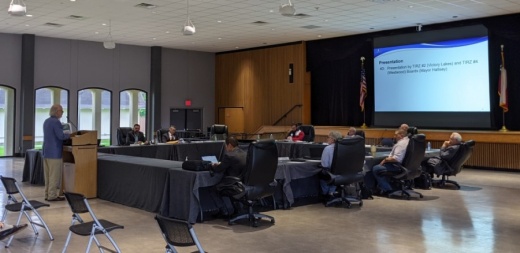Roadway impact fees, or roadway capital recovery fees, are a way in which cities can pay for the increasing demand for roadway improvements from new developments. Many cities, including League City, collect impact fees from developers to help pay for roadway improvements made necessary by such developments instead of going to taxpayers.
In January 2019, League City implemented roadway impact fees despite developers calling it another tax. In City Council’s view, it is better to charge developers for the road improvements rather than taxpayers subsidizing developers’ work.
Council Member Nick Long said he is happy to see the fees increase.
“This is just kind of another step in getting right sized so that we can make new development pay its own way and try to get ahead of the traffic for once instead of just being reactionary,” he said.
Council Member John Bowen said his only concern was increasing roadway impact fees might deter commercial developers from choosing League City for their next projects.
Mayor Pat Hallisey agreed but said City Council can hash out those details later. Right now, the city needs to double its roadway impact fees because housing developments are bloating up the city’s highways with traffic, he said.
With council’s unanimous approval, staff will take at least 90 days to determine the best fee increase.
Today, League City is divided into four roadway service areas. Area 1 is on the east side, 2 is on the north-central side, 3 is on the south-central side, and 4 is on the west side, which is largely undeveloped land.
According to the ordinance, the impact fee rate for Area 1 is $323 per service unit. The fee for areas 2-4 is $1,120 per service unit for residential developments and $560 per service unit for nonresidential developments.
Different types of developments equal different service units based on a formula that includes the number of cars that pass along a road during a peak-traffic hour, the road’s length in miles and other factors.
The statutory maximums for roadway impact fees in League City are much higher than what the city charges today.
The maximum is $323 for Area 1, $3,632 for Area 2, $1,153 for Area 3 and $1,120 for Area 4. The city can increase the fees up to those amounts.
City staff will return to City Council in a few months with recommended new fees.
In other business
League City City Council on May 11 approved a variance to allow an oil driller to start another operation within 600 feet of residences.
One resident spoke before the council urging council to not allow the variance. He said he and his wife suffer from noise and light pollution due to the existing oil drilling operation within 400 feet of his backyard.
David Hoover, League City director of planning and development, said this new drilling operation would be farther away from houses than the one that already exists. Additionally, the existing oil well site was operating before the houses were built, Council Member Hank Dugie said.
The operator met with most of the 14 families that reside close to the oil site. Ten of the 14 agreed to accept money from the operator to allow the second drilling site, city officials said.
Council members commended the operator for doing his due diligence to get neighbors on board with the new operation.
Council members Nick Long and Larry Millican were the only two to vote the variance down.
Long said he would approve the variance only if all 14 families were OK with it.
“If this was my property, I would not take the deal to let the rig be that close to my house, and I would not want to live there,” he said.
Millican said the city’s ordinance for allowing oil rigs should be the toughest there is. The ordinance exists for a reason, and the more the city grants variances, the more developers feel OK with building oil rigs in the city, he said.





